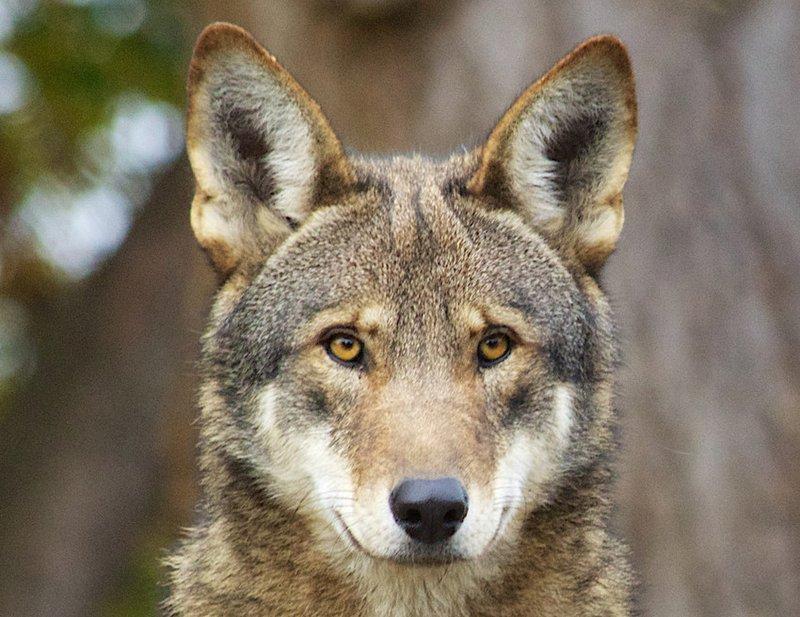Hybridization between red wolves and coyotes presents a significant challenge to the endangered canine
With only 14 individuals known to live in the wild, red wolves are one of America's most endangered mammal species. The Center for Biological Diversity (CBD), which has a mixed record on hunting issues, is hoping to change that by pushing for reintroduction of red wolves into five Southeastern states. But, at least one state biologist says there are many challenges that may prevent reintroduction from being successful.
The CBD has announced a new report identifying public lands in Alabama, Arkansas, Florida, North Carolina, Virginia and West Virginia as suitable for relocation of the species.
The proposed reintroduction sites focus on public land including the Apalachicola and Osceola national forests in Florida; Monongahela, George Washington and Jefferson national forests in West Virginia and Virginia; Ozark and Ouachita national forests in Arkansas; Croatan, Pisgah and Nantahala national forests in North Carolina; and Talladega National Forest in Alabama.
According to the report, each area meets basic requirements for successful reintroductions. Those include adequate prey, potential for reproductive isolation from coyotes to reduce hybridization, connectivity to other possible reintroduction sites, and few humans or roads.
The report recommends that the Fish and Wildlife Service develop a new red wolf recovery plan to outline actions necessary for red wolf conservation, including additional reintroductions. According to the CBD, a new recovery plan is critical to saving this species and fostering a future where they can survive and ultimately thrive.
Collette Adkins, the Center's carnivore conservation director, said, Red wolves could thrive again across these vast areas, but only if the Trump administration returns them to the wild. Without more reintroductions, the red wolf could soon be extinct in the wild. These incredibly imperiled animals can't afford any more delays.
Mike Fies, furbearer project leader for the Virginia Department of Game and Inland Fisheries, says the department does not have an official stance concerning the reintroduction of red wolves into Virginia, but the biological challenges are many.
We can't put another canid out there and expect them not to breed without the constant killing and sterilization of coyotes in the area. And, if sterilization actually worked to significantly decrease the coyote population, we would have done that a long time ago.
"I know there are people interested in seeing this happen, but the drawback for me as a biologist would be the challenge of hybridization," Fies said. "We have many coyotes throughout the state. We can't put another canid out there and expect them not to breed without the constant killing and sterilization of coyotes in the area. And, if sterilization actually worked to significantly decrease the coyote population, we would have done that a long time ago."
Fies acknowledges that wolves and coyotes generally do not get along, and that wolves will often kill coyotes in their territory. But he says hybridization can occur between species when one of the species, such as the red wolf, does not have that many of its own type to breed with.
Fies also points out that red wolves and coyotes look very similar, making them unintended targets for coyote hunters, which presents an additional challenge.
"I just don't know how to get around it," Fies said. "If someone has a good idea of how to solve the issues, that'd be something the department would consider."
The red wolf was once common throughout the Southeastern United States, but according to the CBD report, most populations were extirpated by the mid-1900s due to eradication programs, hybridization with coyotes and habitat degradation. Animals from a remnant red wolf population in Louisiana and Texas were removed from the wild for a captive-breeding program, and the wolf was declared extinct in the wild in 1980. The captive-breeding program supplied animals for a reintroduction effort in North Carolina in 1987. The CBD says the first 25 years of the reintroduction effort was a success, reaching a peak of 130 wolves in 2006, but the population has drastically decreased in the last decade. According to the CBD, the decrease is largely because hunters mistook the red wolves for coyotes.
Some who are against the reintroduction have claimed that remaining red wolves are actually more coyote than wolf anyway. But, a study by the National Academies of Sciences, Engineering and Medicine, which was released earlier this year, provides evidence that supports the classification of the contemporary red wolf as a distinct species. Scientists who participated in the study say not only are they distinct from gray wolves and coyotes, current red wolves trace back to ancestors that lived more than 10,000 years ago.
So what do you think? Is reintroducing the red wolf to the Southeast worthwhile?
For more crazy outdoor stories, visit The Realblog and check out Realtree's Facebook page.







